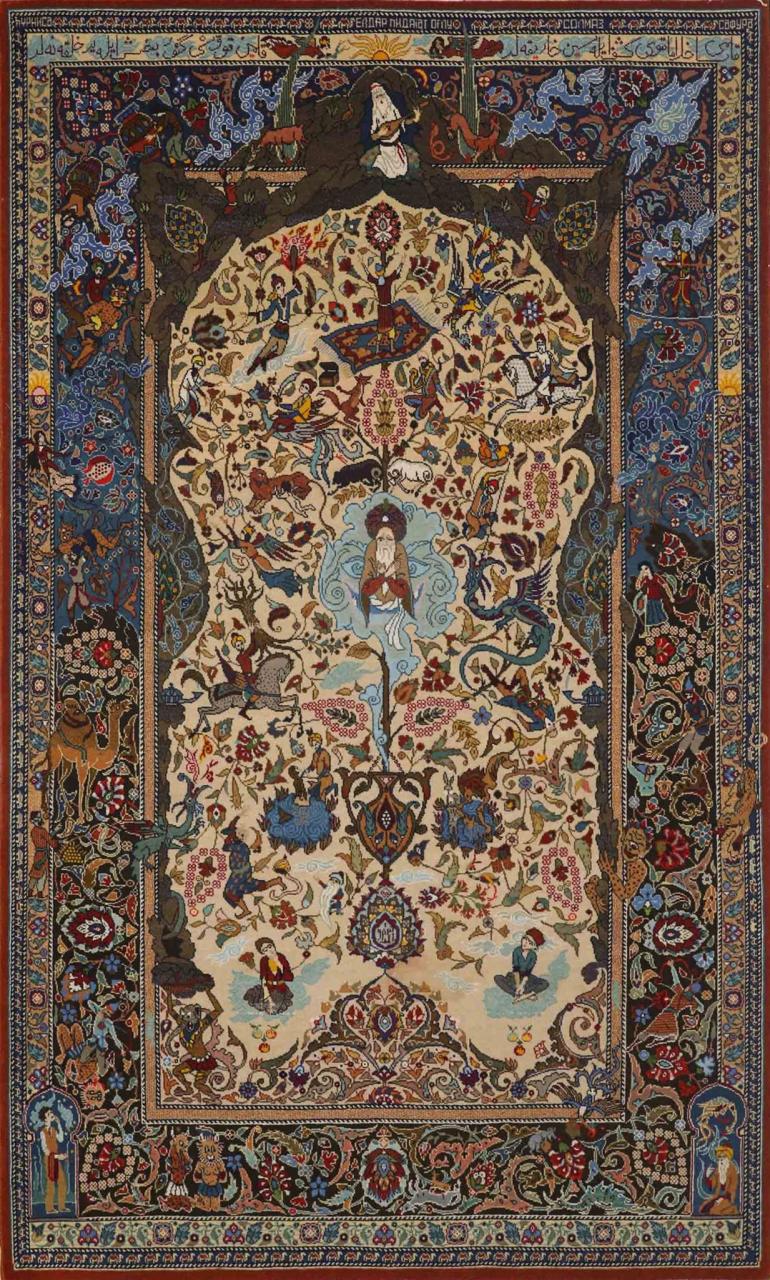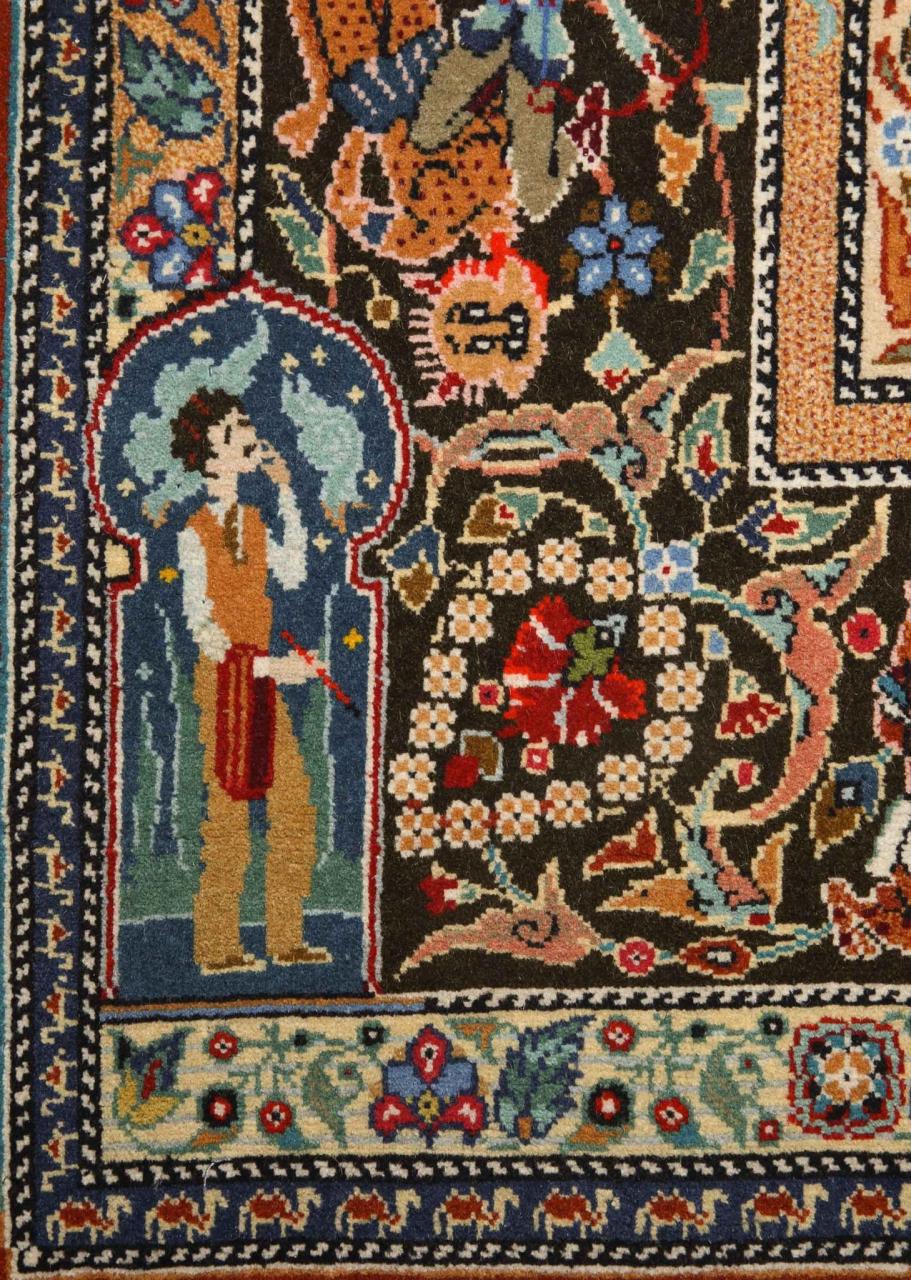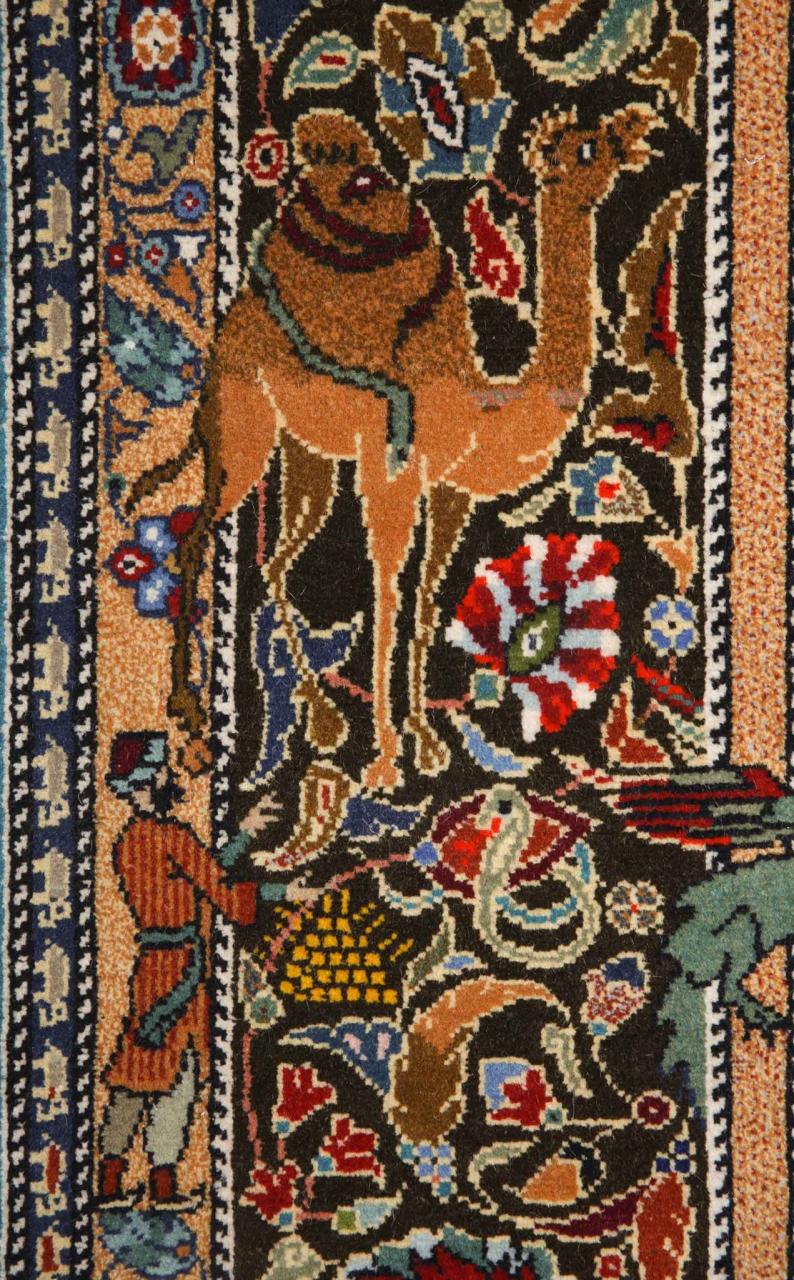Carpet Museum presents fairytale rug [PHOTO]
![Carpet Museum presents fairytale rug [PHOTO]](https://www.azernews.az/media/2017/12/29/azerbaijan_carpet-museum_1.jpg)
By Laman Ismayilova
Azerbaijan National Carpet Museum has displayed stunning carpet woven by eminent artist Eldar Mikayilzade.
The carpet showcases scenes from fairytales and characters such as "Malikmammad", "Boy on White Horse", "Flying Carpet", "Beautiful Fatma", "Pomegranate Girl and "Rooster and the Shah".
Let's take a closer look at the center of the carpet: there is an image of a genie who comes out of the lamp in the famous fairytale Alibaba and Forty Thieves.
The lower part of the carpet portrays two children. They hold three apples in their hands. In the traditional ending of Azerbaijani fairytales, three apples fall from the sky, for those who narrated and listened.
Meanwhile, the Carpet Museum stores over 14,000 exhibits of the finest Azerbaijani carpets.
The museum hosts multiple events, including international symposiums, conferences and various exhibitions.
In 2019, the museum received national status for its significant contribution to the popularization and promotion of the Azerbaijani Carpet Weaving Art.
In 2020, the Carpet Museum enriched its collection with beautiful pile carpets purchased by the Culture Ministry at the Sartirana Textile Show in Italy.
The 19th century Guba carpet Ugakh was donated to the Carpet Museum, while Karabakh carpet Chelebi enriched the collection of the museum's Shusha branch.
The Carpet Museum also focuses on cooperation with world-leading museum organizations.
Moreover, the Carpet Museum won Travelers' Choice Awards for the fourth time in a row last year.
Carpet-weaving art is considered an integral part of Azerbaijani culture and craftsmanship. Azerbaijani carpets are stored in many prestigious museums and private galleries around the world.
According to their technical aspects, Azerbaijani carpets are classified as flat-woven (pileless) and knotted (pile). The flat-woven carpets are linked to the earlier period of carpet weaving. There are several kinds of pileless carpets such as Shadda, Verni, Jejim, Zilli, Sumakh, Kilim and Palas.
Shadda is a flat weave carpet, made primarily in Nakhchivan, Agdam, Gubadly, Agjabedi. The artistic composition of shadda made by complicated whipping, as well as its constituents have a complex form.
One of the most widely spread type of the flat-weave carpet is "verni". The key pattern of "verni" is the S-element. Its shape varies, it may resemble both figure 5 and letter S. This element means "dragon" among the nomads and “water” among the village people. According to the ancient believes, a dragon featuring carpet would protect the family from foul weather. Agjabedi, Barda, Aghdam, Nakhchivan are the centers of this type of pileless carpets.
Jejims are woven on simple horizontal looms by narrow stripes 30–35 cm wide and 15–10 cm long. The resulting product is a cloth to be used as a wall carpet, a bedding coverlet, or curtains.
The major jejim production centers are Barda, Nakhchivan, Zangilan, Shusha, Shamakha.
Zilli carpet is characterized by stylized forms of animals and vegetal elements. In terms of their composition and pattern the Azerbaijani zillis are very diverse. They feature the images of large elements in the shape of big lozenges, paired horns, various stylized elements.
The Sumakh carpets have become widely spread and recognized over the last few centuries. Since the 18th century, they have been made in country's Guba and Gusar regions.
The Sumakh carpets feature the diverse stylized vegetal motifs, various geometrical elements such as large hexahedral, square, rhomboid medallions.
Kilim is the most widespread type of flat-woven carpets. They are made by passing the weft through the warp using the technique of compound interweaving. Kilim is characterized by a slot-like gap (opening) around the geometrical patterns.
The technique of kilim weaving predetermines the pattern shapes in the form of a lozenge, triangle, and trapezium. Images of animals, birds and humans are geometrized in kilims. Kilims of different regions are distinguished by their composition, pattern, and colors. In terms of their technical peculiarities kilims can be classified into five major groups based on the area of production: Kazakh, Karabakh, Absheron, Shirvan and Tabriz kilims.
Palas is one of the widely spread flat-weave carpets. The palas weaving process consists in passing the weft through the warp by a simple technique.
The weavers decorate the palas by traditional patterns in the form of horizontal stripes commonly used throughout Azerbaijan. As a rule, the palas is not framed by a border.
---
Follow us on Twitter @AzerNewsAz
Here we are to serve you with news right now. It does not cost much, but worth your attention.
Choose to support open, independent, quality journalism and subscribe on a monthly basis.
By subscribing to our online newspaper, you can have full digital access to all news, analysis, and much more.
You can also follow AzerNEWS on Twitter @AzerNewsAz or Facebook @AzerNewsNewspaper
Thank you!



